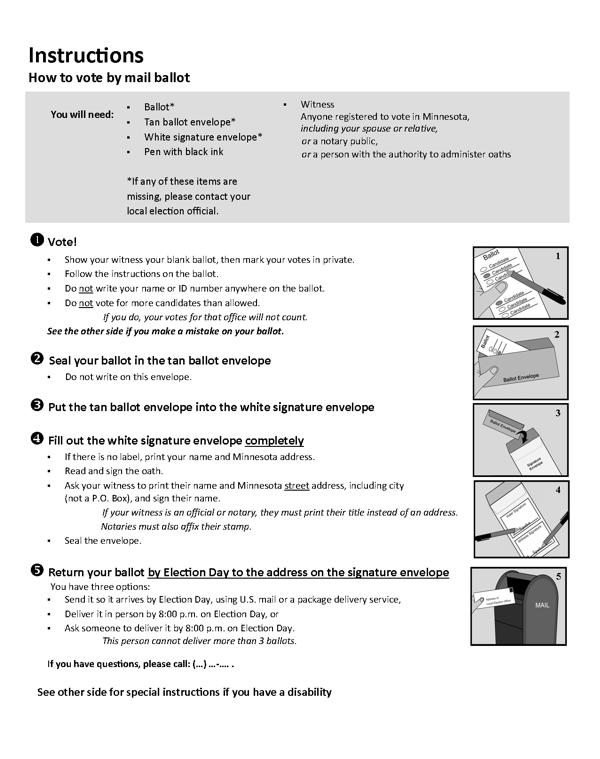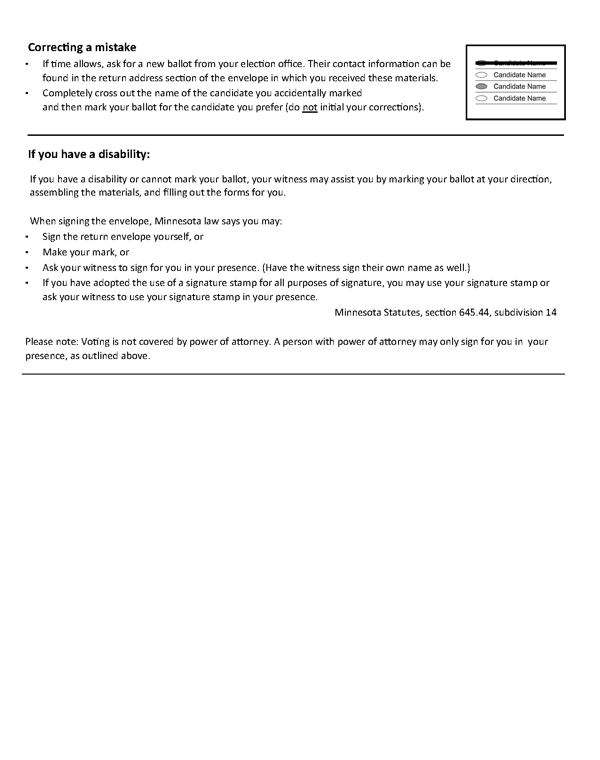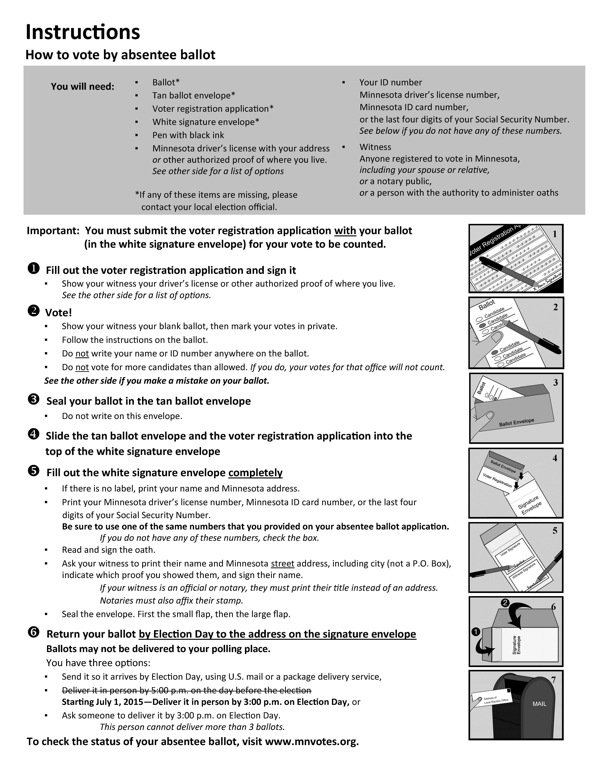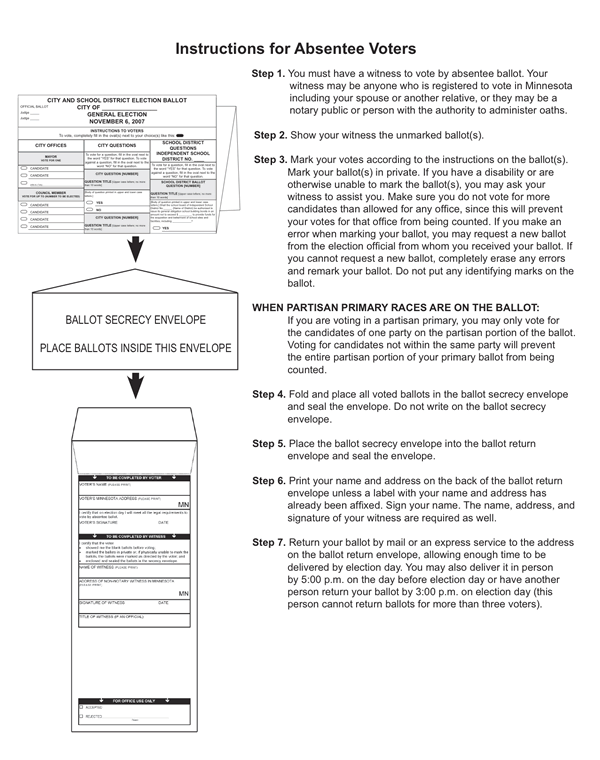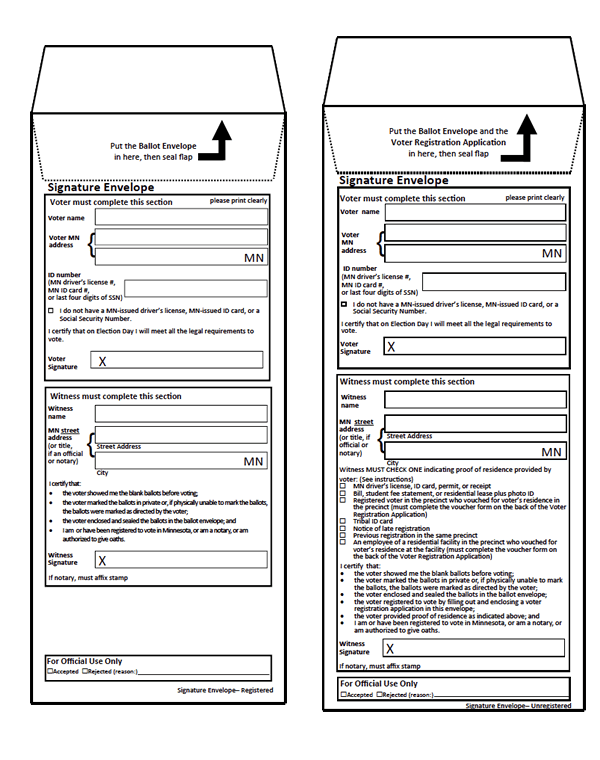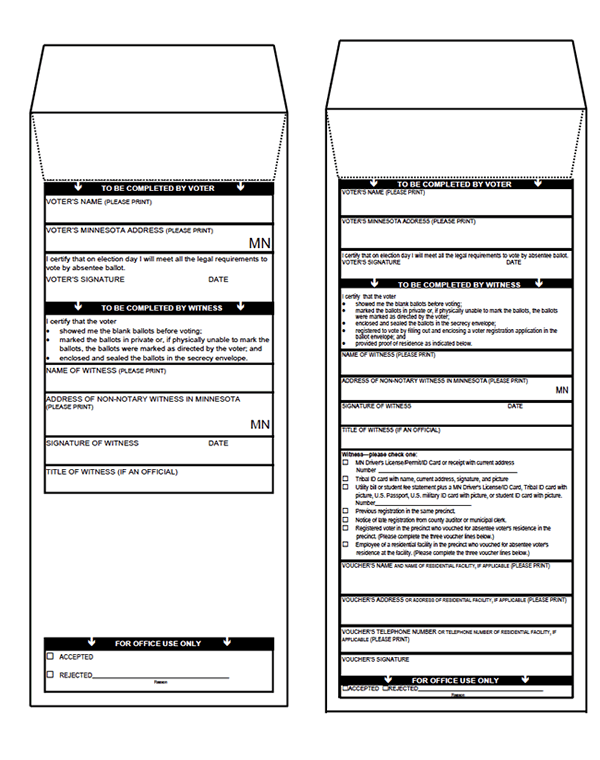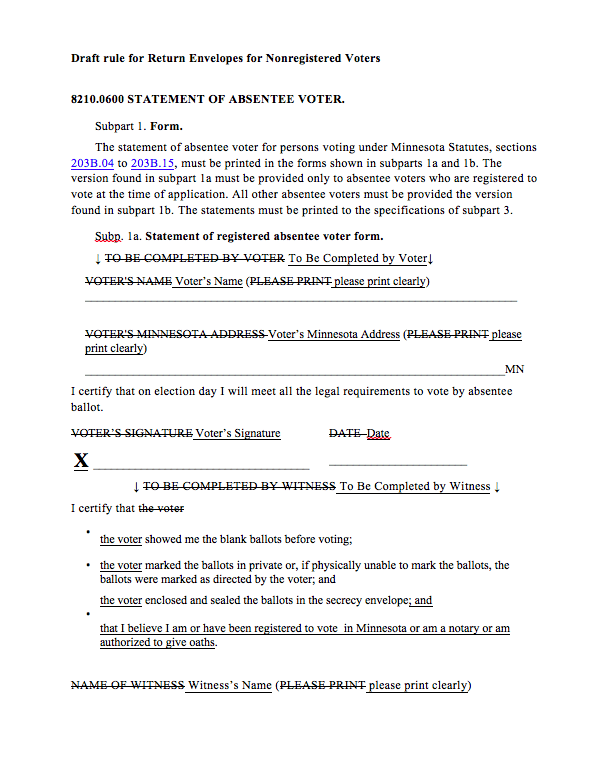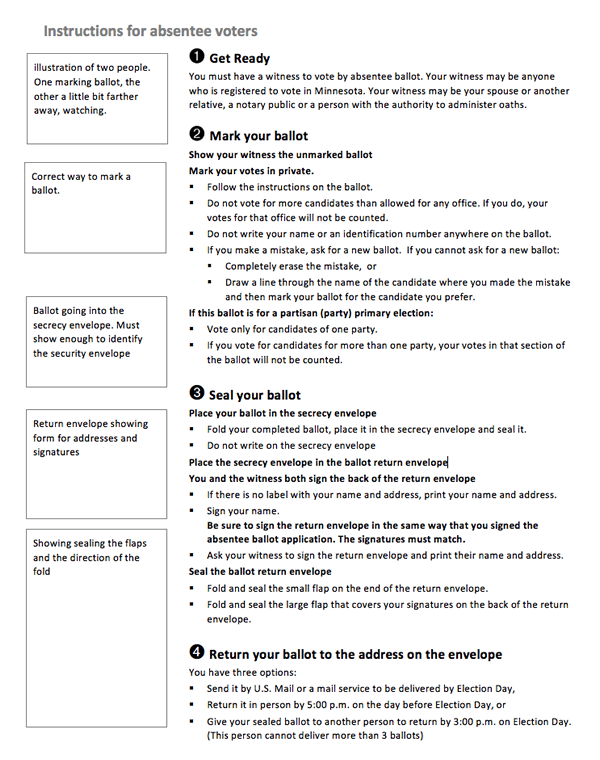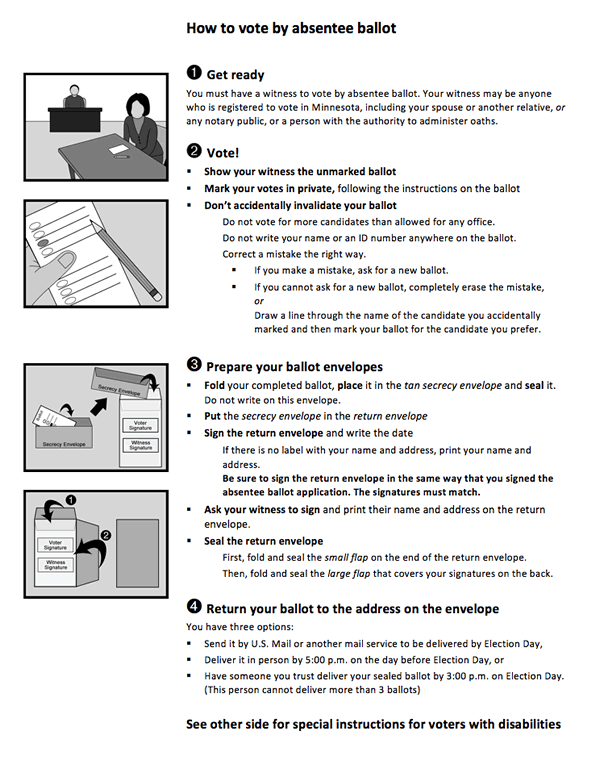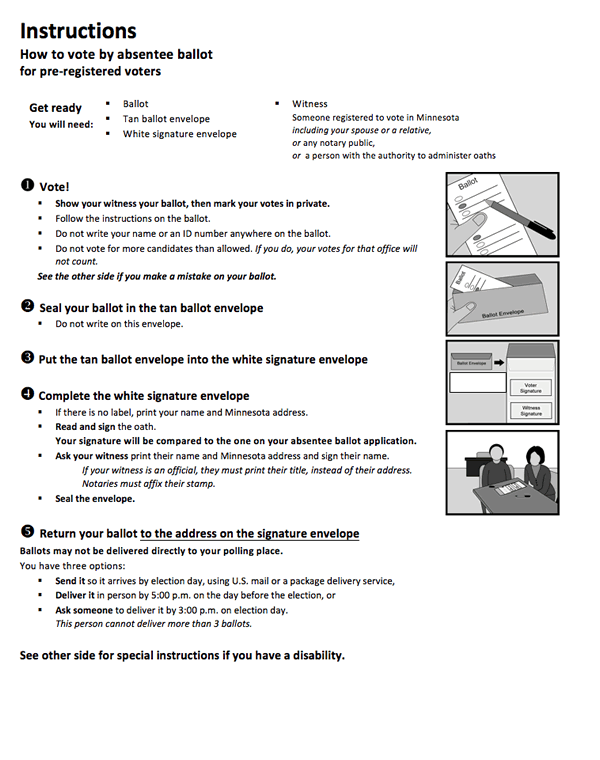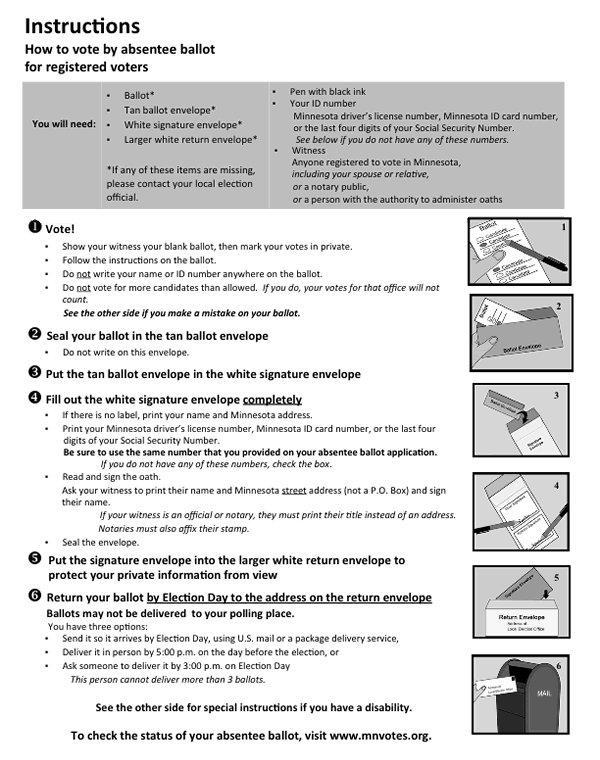Absentee ballot instructions in Minnesota
In 2008, the election for Senator from Minnesota between Al Franken and Norm Coleman was decided only after a lengthy recount and legal battle that lasted over 8 months. One of the biggest controversies centered on absentee ballots and deciding which of them were even eligible to be counted.
A shockingly high number were disqualified because the envelope with the voter’s identification and signature and witness signature was not completed correctly. In other words, citizens who had gone out of their way to receive and return a ballot did not have their votes counted.
After the election was over, Minnesota decided to revise the instructions for absentee ballots to try to reduce the number of ballots which are disqualified. Their commitment to continuing to revise the instructions and forms continues to this day. We were proud to be able to help the Secretary of State’s office with this project.
A group of volunteers from what was then the Usability in Civic Life project came together to work on the project. Through the original project, we created dozens of versions as we worked to clarify the process, simplify the language, and add useful illustrations.
The person who deserves the most credit for the success of this project is Beth Fraser. She took on the challenge of working with a group of volunteers located both in Minneapolis and around the country. She also managed the process of reviewing our drafts for legal accuracy and to ensure that they supported the election process. She and her colleagues learned about usability, and ran the second usability test on their own.
Credits
- Office of the Minnesota Secretary of State: Beth Fraser, Andy Lokken, Michele McNulty, Gary Poser
- Usability in Civic Life: Whitney Quesenbery, Dana Chisnell, Josie Scott, Caroline Jarrett, Sarah Swierenga
- Center for Plain Language: Dana Botka, Ginny Redish
- Usability testing: David Rosen, Josh Carroll, Suzanne Currie, John Dusek, Gretchen Enger
- Illustrations: Christina Syniewski
For more information
- Absentee ballot instructions and forms – Minnesota Secretary of State website
- Prescriptive laws make bad elections by Whitney Quesenbery in Clarity No. 65, May 2011, p37-40
- Presentation: Minnesota absentee ballot instructions: from recount to clarity


